Discovering flying termites in your home can be alarming, as they often signal a serious issue – a termite infestation. Understanding why these termites have made their way into your home is crucial, and learning effective methods about how to get rid of flying termites is crucial.
By addressing this issue promptly, you can maintain your home’s integrity and prevent further damage. In this blog, we will explore the reasons behind the presence of flying termites and explore effective solutions to help you learn how to get rid of flying termites.
What do Flying Termites Look Like?
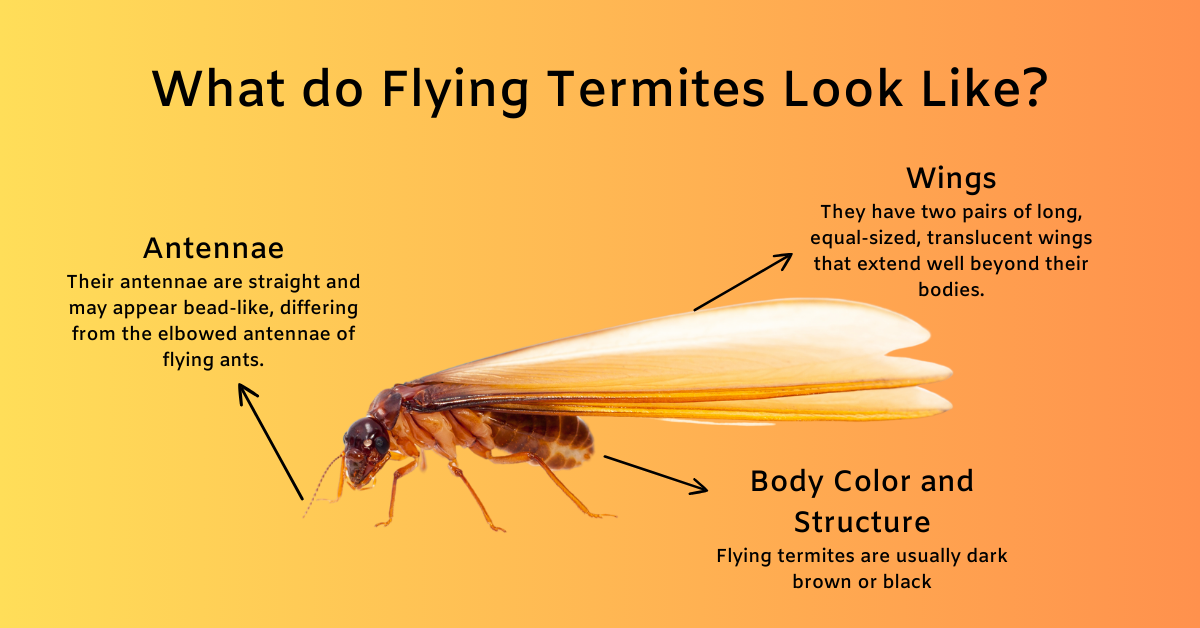
To know how to get rid of flying termites, it is first important to identify them right. Flying termites, often known as termite swarmers or alates, are typically recognized by their small, winged appearance. They are usually about 1/4 to 1/2 inch long. Key features include:
- Wings: They have two pairs of long, equal-sized, translucent wings that extend well beyond their bodies. The wings are distinctive, as they are quite large compared to the termite’s body.
- Body Color and Structure: Flying termites are usually dark brown or black. Unlike ants, they have a straight, somewhat thick body with a pinched waist.
- Antennae: Their antennae are straight and may appear bead-like, differing from the elbowed antennae of flying ants.
These termites are often seen during swarming season when they leave their nest to start new colonies. This typically happens in the spring, but timing can vary depending on the species and environmental conditions.
Identifying flying termites is the first step in tackling an infestation. However, it’s equally important to recognize the signs of a broader termite problem in your home. Learn more about this in our detailed article on how to spot signs of termites, which will help you detect termite presence before it becomes a major issue.
Difference Between Flying Termites and Flying Ants
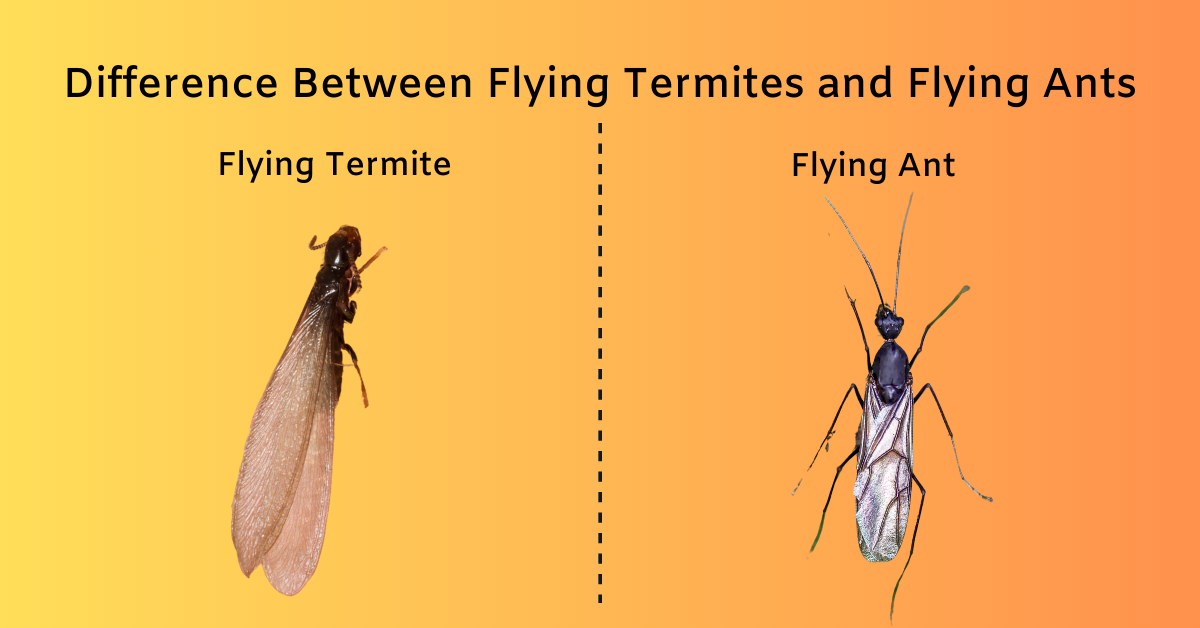
Understand how to differentiate between flying termites and flying ants:
| Flying Termites | Flying Ants | |
| Wings | Flying termites have two pairs of wings that are equal in size and shape, and they are typically longer than their body. | Flying ants also have two pairs of wings, but their front wings are noticeably larger than the back wings. |
| Body Shape | Termites have a straight, uniform body without a distinct waist. | Ants have a pinched waist, giving them a segmented appearance with a clear differentiation between the thorax and abdomen. |
| Antennae | Termite antennae are straight and may appear to have a string of beads. | Ant antennae are bent or elbowed. |
| Color and Size | Flying termites are usually dark brown or black and range from 1/4 to 1/2 inch in length. | Flying ants can vary in color, often black, brown, or reddish, and their size can vary depending on the species. |
Why Do You Have Flying Termites in Your Home?
Have you noticed flying termites in your home? You might wonder how to get rid of flying termites. These termites, also known as swarmers, signify a nearby termite colony. Understanding the factors that attract them can help you better tackle the problem.
Here are some key reasons why you might be facing a flying termite issue:
- Moisture: Termites love damp environments. Areas in your home with excessive moisture, such as around leaky pipes or basements, can be ideal breeding grounds.
- Wood Access: Termites feed on wood, so if any wood in your home is in contact with the ground or is decaying, it can attract these pests. This includes lumber piles, firewood, and old tree stumps near your home.
- Entry Points: Tiny cracks in your home’s foundation, walls, or around windows can serve as entry points for termites. They can sneak through these small openings and make themselves at home.
- Warmth and Darkness: Termites prefer warm, dark places. Areas of your home that are consistently warm and out of direct sunlight can become hotspots for termite activity.
- Existing Colonies: Sometimes, flying termites indicate an existing colony within or near your home. These swarmers are the reproductive members of the colony, and they’re on the lookout to expand their territory.
Now that you know why they appear, let’s look at some practical and effective ways on how to get rid of flying termites and keep them from returning.
How to Get Rid of Flying Termites: Top 5 Solutions
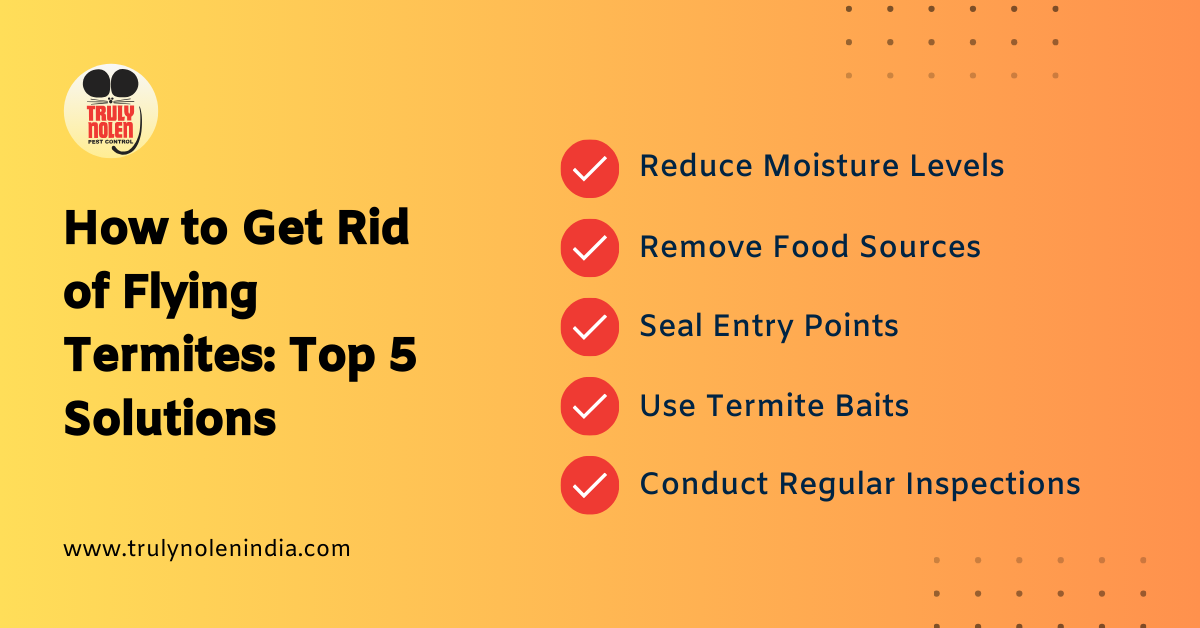
Learning how to get rid of flying termites involves addressing both the swarmers and the underlying infestation. Here are some practical steps:
- Reduce Moisture Levels
Reducing moisture levels in your home is crucial to understand how to get rid of flying termites. Address any leaks in faucets, pipes, and air conditioning units, particularly in areas prone to moisture, such as bathrooms and kitchens.
Proper drainage is key, so keep gutters and downspouts clear to steer water away from the foundation of your house. In naturally damp spaces like basements and crawl spaces, consider using dehumidifiers.
Additionally, enhance ventilation in attics and crawl spaces by installing vents or fans, which can significantly help reduce moisture accumulation.
- Remove Food Sources
To safeguard your home against flying termites, focus on removing their potential food sources. It’s advisable to store firewood, lumber, and paper at a considerable distance from your home’s foundation, preferably in a dry and elevated area.
Also, apply a high-quality sealant to all wooden surfaces, including outdoor structures and fixtures. Regular inspections for signs of termites, such as mud tubes or damage to wood, are crucial in early detection and reducing the likelihood of an infestation.
- Seal Entry Points
Inspect and seal any potential entry points in your home to prevent flying termite invasions. Concentrate on closing gaps around the foundation, windows, doors, utility lines, and pipes using caulk or weather stripping.
Also, check and seal cracks in exterior walls, the roof, and near vents. This preventative measure is essential, especially during the termite swarming season when they actively seek new colony locations.
- Use Termite Baits
Deploy termite baits around your home to combat flying termites effectively. These baits work by luring termites with a poisoned food source, which they then carry back to their colony, gradually diminishing its population.
Strategically place these baits in suspected termite activity zones or around your home’s perimeter. It’s important to regularly check and refresh these baits, ensuring continuous protection and disrupting the lifecycle of the termites to prevent future swarms.
- Conduct Regular Inspections
Conduct frequent home inspections to spot early indications of flying termites, especially near light sources and openings like windows and doors. Be on the lookout for signs like shed wings or damage to wood.
Remember to examine outdoor spaces, such as areas with mulch and tree stumps, basements and crawl spaces, for possible termite entryways. Detecting these signs early is crucial for averting a major infestation, and if you do notice any, seeking advice from a professional pest control service is advisable.
Regular inspections are key in early detection and control of flying termites. However, your pest control efforts shouldn’t stop there. A comprehensive approach is necessary for dealing with various household pests.
To understand the broader scope and effectiveness of pest control measures for not just termites but also cockroaches, bed bugs, and flies, explore our detailed overview in how effective is pest control for termites, cockroaches, bed bugs and flies. This information will help you in formulating a more effective and all-encompassing pest management strategy for your home.
While the focus here is on flying termites, addressing all types of termite infestations for comprehensive control is important. For more detailed strategies on general termite eradication, check out our guide on how to get rid of termites.
This guide provides a broader approach to termite control, which is essential for ensuring your home is protected from termites.
Guard Your Property Against Termites With Truly Pest Solution!

Dealing with flying termites promptly and effectively is crucial to prevent extensive damage to your property. While home remedies offer temporary relief, consulting with a professional pest control service is often necessary for complete eradication. Regular inspections and preventive measures about how to get rid of flying termites can go a long way in keeping your home free of termites.
Truly Pest Solution offers more than just a pest control service; it’s a commitment to maintaining a safe environment. We specialize in tackling termites’ unique challenges with innovative, eco-friendly, and hassle-free solutions. Our approach is designed to minimize the use of chemicals, ensuring the safety and well-being of your space.
We provide tailored, research-driven, eco-friendly, and hassle-free services to prevent termites. With Truly Termite Control plan, we offer a safe, efficient, and technologically advanced method to prevent termites in your home and maintain a safe environment.
Contact us and Book a Meeting now!
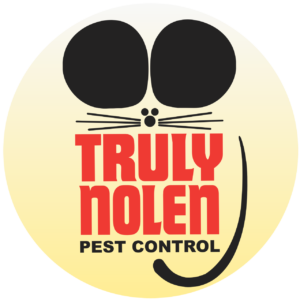
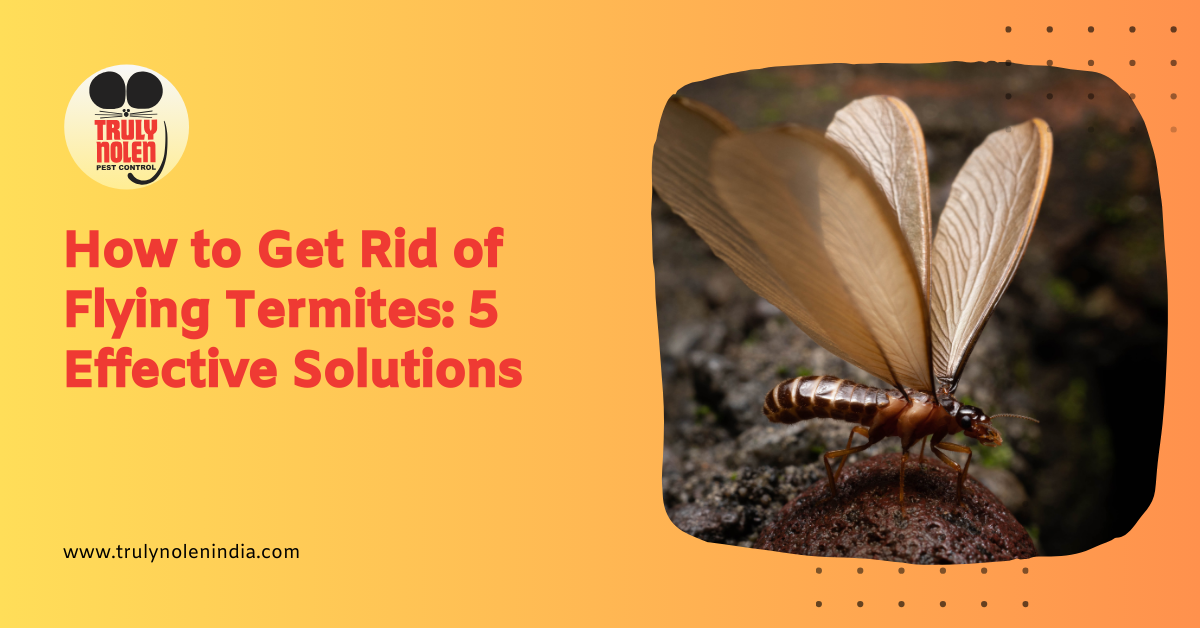
Leave a Reply